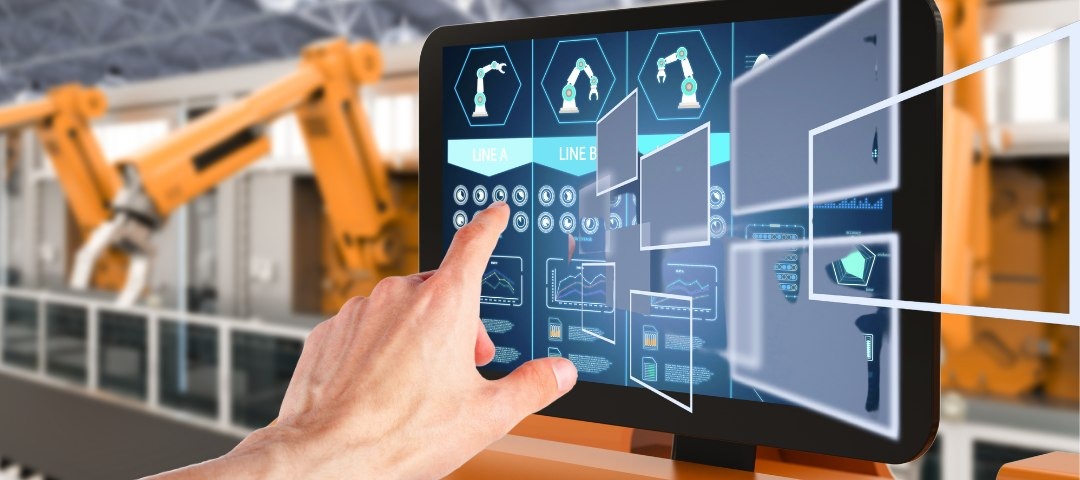Human-Machine Interfaces (HMIs) are specialized interfaces that play a crucial role by offering a link between machinery and human operators, and therefore have become important components of various kinds of technical systems across industries and applications including UAV land surveying. They allow machinery control and interaction through visual and tactile feedback, thus supporting effective process management. They allow users to control elements and system statuses to enhance operational efficiency and intuitiveness. Some common features embedded during human machine interface development include high-resolution displays for sharp, detailed visuals for accurate monitoring, readability, process control, clear presentation, minimal errors and better decision making. They also feature touchscreens for enhancing user engagement and streamlining processes by eliminating switches, buttons, levers etc.
Moreover, these interfaces are customizable in terms of layout, color, display options etc. rendering a personalized experience and real-time monitoring of system, overall performance, machine status, and other feedback parameters. In 2020, the human machine interface market was valued at US $3.71 billion and is predicted to grow at a CAGR of 10.3% to attain a valuation of US $7.24 billion by 2026. Let us dive into the industrial applications, design, development, evolution and futuristic trends of human machine interface development.
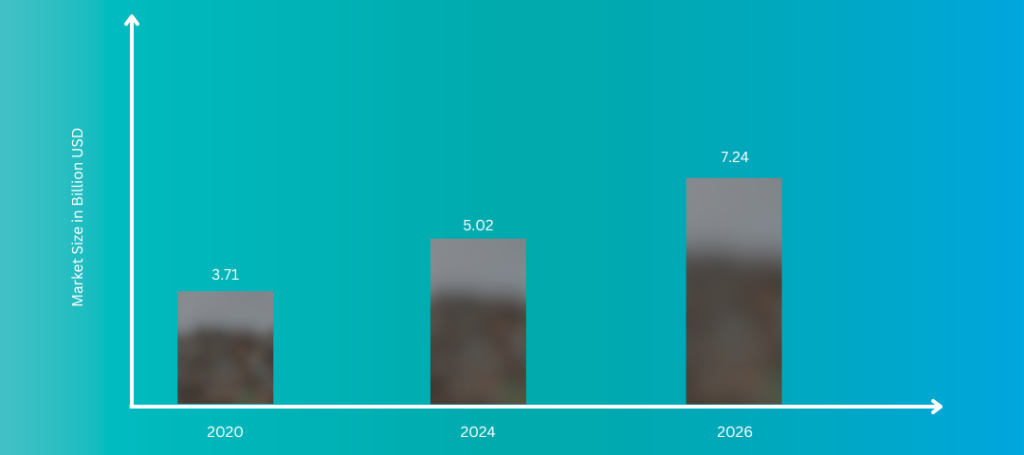
Increasing market size of human machine interface development between 2020 to 2026
Evolution of Human Machine Interface Design
Interface screens have undergone major advancements from limited interaction visual displays to high-definition GUIs in the last few decades because of their ever-increasing demand. Today one can observe sophisticated interfaces featuring high-resolution displays, touchscreen capabilities and intuitiveness to manage complex systems, but these screens are a product of years of advancements –
1900s: The push button era is marked with basic interfaces that operate with buttons, knobs, sliders etc. It basically included system hardware control with physical buttons, LEDs and 7-segment display controlled gauges, electricity, dials, automobiles, electronic instruments etc.
1980s: The Graphical User Interface (GUI) era was marked by the increase in market accessibility of personal computers. These computer coded interfaces allowed users to operate machinery using a basic display, keyboard, mouse or trackball.
2000s: The touchscreen era succeeded the mass availability of phones with trackballs and buttons, as smartphones were introduced in the global market. Human machine interface companies designed these screens to feature light-weight, sleek appearance, internet and communication access etc.
2010s: Touchscreens were adapted in tablets, digital and touchscreen laptops, smartboards, televisions, smartwatches, medical devices and equipment etc. This decade also saw the emergence of virtual assistants, LED displays and voice command feature to control appliances and lights in home automation systems, temperature, infotainment systems, auto-driving mode etc.
2020s: The brain-machine interface era begins showcasing intuitive screens with augmented reality (AR), virtual reality (VR), holographic displays for touch sensation etc. This decade is basically marked by Neuralink, an AI-based interface that receives and interprets signals from a neurochip implanted in the brains of patients. It grants control over the functioning of devices, appliances, exoskeletons, vehicles etc. without any additional human aid, physical contact or verbal command like a telepathic medium.
AI integrations for predictive maintenance, adaptive interfaces, intelligent video analytics, and complex process management are expected in the near future. Similarly, IoT integrations for enhanced connectivity, comprehensive data sharing, coordination and communication are likely to increase. Researchers and HMI designers constantly seek to design HMI screens with better durability, low carbon print, applicability and robustness.
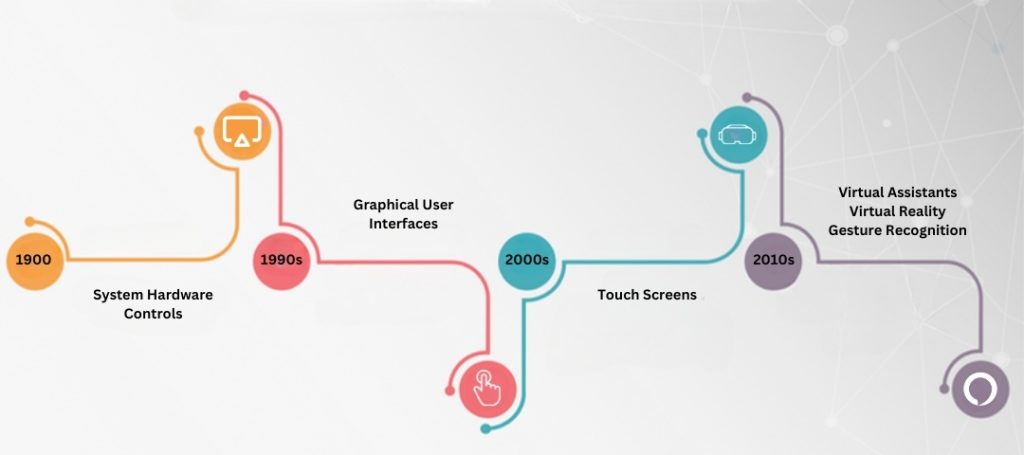
Evolution of screens brought about by human machine interface companies
Key Highlights for Human Machine Interface Development
1. User Requirements: By engaging with stakeholders, designers can understand the needs of the end user and define essential functions, UI requirements and usability. It is necessary to consider varied user profiles, like blue-collar and white-collar employees, operators, maintenance personnel, managers for diverse applications.
2. Design Principles: It is important to design HMI screens that impart clarity, simplicity, intuitiveness by using standard icons, consistent terminology, layout, colors, customizable font, straightforward navigation and design language across all screens to reduce learning curves and errors. Visual hierarchy is noteworthy in this context, which involves prominent placement of critical information and group controls.
Designers need to focus on application-specific considerations to design HMI screens like real-time data display (speed, engine status, fuel level), safety features, vehicle system integration, minimal distraction, FOTA update for automotive, process control (toggles, push buttons, sliders), real-time monitoring (trend graphs), troubleshooting, and maintenance alarms (color-coded alerts) in manufacturing, status monitoring (indicators), control functions, data visualization, logging, historical analysis, operational efficiency in the energy sector etc.
3. Design Software: For creating coherent screens, human machine interface companies use specialized software tools such as Siemens WinCC, Rockwell FactoryTalk, Wonderware InTouch, Ignition, LabVIEW etc. Relevant programming languages for designing interactive and visually appealing interfaces include C#, C++, JavaScript, Python, Ladder Logic, Structured Text etc. as per the application of HMI in question.
4. Regulatory Compliance: It is of utmost importance for human machine interface companies to adhere to industry standards such as ISO 9241 for best ergonomic practices, IEC 61131 while developing to and fro interactions with programmable logic controllers (PLC), IEC 60601 for safety of medical electrical equipment, ISO 9001 for quality management systems, ISO 13849 for safety alarms and warnings, ISO 13485 for medical device quality management, ISO 26262 for Automotive SPICE, human factors design guidelines for driver-vehicle interfaces by the National Highway Traffic Safety Administration (NHTSA), FDA regulations in healthcare for medical devices etc.
5. Testing & Validation: Usability testing ensures feedback from end users for timely adjustments to ensure compliance with IEC 62366 for usability engineering. This is followed by validation in real-world scenarios to ensure the screen meets performance criteria.
6. Documentation & Training: Comprehensive documentation, training sessions and material like user manuals, quick references, guides need to be developed and provided for user understanding.
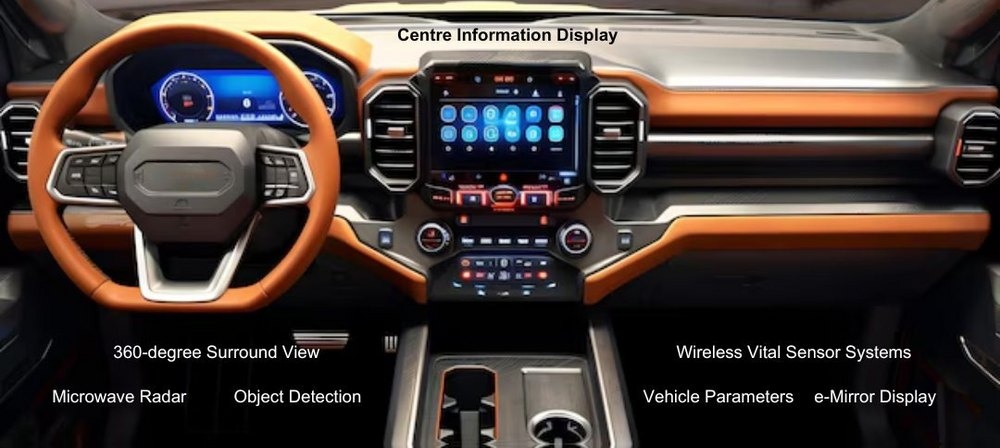
Automotive companies design HMI screens that display inputs from sensor systems
Industrial Applications of Human Machine Interface Development
Automotive
In the automotive industry, HMIs are used as dashboard displays in modern vehicles for displaying real-time speed, navigation route, infotainment, vehicle detection system and diagnostics, telematics, smart parking management and more. They can act as interactive touchscreen control panels for adjusting system parameters like climate control, media, deceleration on human detection using OpenCV and other vehicular functions. Nowadays, human machine interface designs are also available as Heads-Up Displays (HUDs) that overlay information such as speed and navigation prompts on the windshield, thus increasing productivity and reducing downtime for efficient driving.
Manufacturing
HMIs are required in this industry to operate and monitor machinery, adjust settings and diagnose issues in machine working and control. As a part of vision inspection systems, they can display real-time data for manufacturing processes, reduce operational errors and learning curve, and ensure safety and efficiency of the same. These interfaces can control and monitor production lines, automated food processing and packaging lines as well. HMIs are used for checking product quality and adjusting the processes as per requirement in contained production of food and beverages.
Healthcare
Human machine interface designs are used in patient monitoring screens across hospitals and clinics that display vital signs, medical data in real-time and also portray vision-based human activity recognition. These interfaces are also used in diagnostic equipment such as MRI and ultrasound for managing and interpreting results. They enhance safety protocols by providing clear visual feedback, real-time alerts and identification of potential issues prior to escalation, risks and operational disruptions by using inputs from sensors and systems that work on computer vision in healthcare.
Consumer Electronics
One can find human machine interface screens for managing settings on televisions, home assistants, smart appliances etc. In industries and retail stores, HMI screens are present in devices such as printers, vending machines, cobots working for logistics inventory management and more to facilitate operational workflow and maintenance. These are flexible, scalable and customizable interfaces with advanced connectivity options for seamless integration with systems and devices.
Gaming & Entertainment
Gaming consoles usually come with interactive screens and devices for receiving actionable inputs from players and an overall immersive experience. Media players, disc decks and mixers are available as touchscreens for controlling music and video playback. They can be used to program, control robotic systems and display real-time performance and troubleshooting data.
Energy
Various human machine interface designs are used for monitoring, controlling energy production, power distribution and electrical grid management in power plants. They are also used as interfaces to control settings and monitor the performance of solar panels, wind turbines, other renewable sources, energy systems as well as for controlling and managing operations in electrical substations. In the oil and gas industry, HMIs can control drilling rigs, equipment and track flow and integrity of pipelines.
Defense
Command control systems feature special grade human machine interface development for managing and controlling various military systems, such as communication systems, weaponry, UAVs, human thermal imaging systems etc. Interactive screens are also utilized in simulation training for developing operational tactics.
Waste Management
Automatic waste sorting machines require human machine interface development for handling, monitoring waste segregation and equipment efficiency in recycling facilities. Wastewater treatment plants process and monitor water quality through these HMIs. They assist in infrastructure management by managing pumps and other components in these systems.
Conclusion
We observed various industrial applications of human machine interfaces, the evolution and future developments in touchscreen technology that will enhance modern-day HMI screens. Contemporary and accessible flexile displays, haptic feedback and gesture recognition are to provide more intuitive, immersive user interaction experiences and seamlessly effective user interfaces.
KritiKal stands amongst the best human machine interface companies that develop reliable HMI screens designed with durable material to withstand industrial environments, dust, moisture, vibrations and other challenges. It leverages the latest advancements like AI integration, touchscreens and connectivity methods to drive innovation and operational excellence in developing HMI screens that form the fundamental element in various industries. It ensures that in order to design HMI screens, user requirements and application-specific considerations are gathered, design principles and standards are adhered to, and the best of software and technologies are utilized in development, prior to effective usability testing and documentation. We have designed and developed various types of intuitive and interactive HMI screens for SMBs and Fortune 500 companies working in multiple industries. Please contact us at sales@kritikalsolutions.com to avail our services.

Amit Srivastava currently works as a senior Embedded Engineer at KritiKal Solutions. He has expertise in hardware, circuit and PCB design, circuit simulation, embedded electronics development and testing, Altium etc. with which he has helped KritiKal deliver various projects to some major clients.
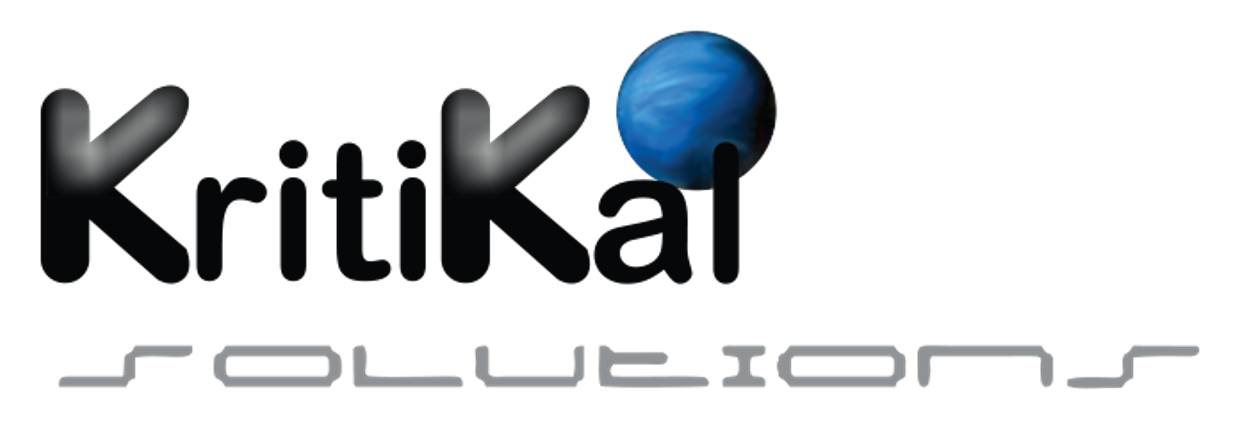


 Global
Global  United States
United States 
